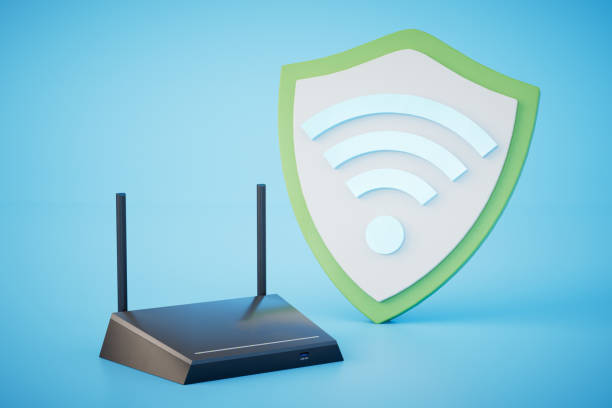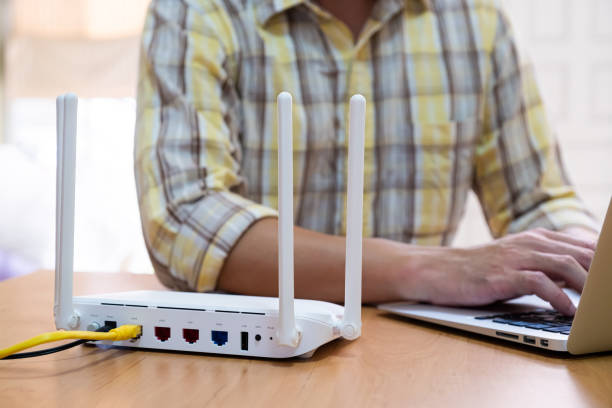Introduction
In an age where our homes and offices are powered by an intricate web of connected devices, the security of our routers is paramount. A hacked router not only poses a threat to personal data but can also compromise the entire network. Recognizing the signs of a compromised router is the first step towards ensuring a secure digital environment. In this comprehensive guide, we’ll explore the signs of a hacked router in detail and provide actionable steps on how to fix it.
What are the Signs of a Hacked Router?
Inconsistent Internet Speeds
- Symptoms: Sudden slowdowns and fluctuations in speed.
- Explanation: Hackers may manipulate router settings, impacting internet performance.
- Observation: Monitor internet speeds regularly and note any unexpected changes.
Unauthorized Devices on Network
- Symptoms: Unfamiliar devices connected to Wi-Fi.
- Explanation: Hackers gaining unauthorized access to the network.
- Observation: Regularly check the list of connected devices in your router settings.
Strange Behavior from the Router
- Symptoms: Unusual lights, overheating, or frequent reboots.
- Explanation: Signs of a compromised router operating abnormally.
- Observation: Pay attention to physical signs and router behavior.
Unusual Pop-ups or Redirected Websites
- Symptoms: Unexpected pop-ups, redirection to unfamiliar sites.
- Explanation: Hacked routers can manipulate internet traffic.
- Observation: Take note of unusual online behavior during browsing.
Frequent Disconnects
- Symptoms: Regular internet disconnections without apparent reasons.
- Explanation: Hackers may intentionally disrupt the connection.
- Observation: Keep track of the frequency of internet dropouts.
Why Should You Be Concerned?
Understanding the implications of a hacked router is crucial:
Risks to Personal Data
- Concern: Unauthorized access to personal information.
- Action: Recognize the potential for identity theft and privacy breaches.
Potential for Malicious Activities
- Concern: Hackers exploit the compromised router for illegal activities.
- Action: Awareness of the legal consequences and potential involvement.
Impact on Overall Network Security
- Concern: Compromised router jeopardizes security for all connected devices.
- Action: Recognize the interconnected nature of devices within the network.
| Call 866-861-4084 for Internet Deals |
How Do Routers Get Hacked?
Understanding the entry points for hackers is essential for prevention:
Weak Passwords
- Risk: Using easily guessable passwords.
- Prevention: Create strong, unique passwords for your router.
Outdated Firmware
- Risk: Routers with unpatched vulnerabilities.
- Prevention: Regularly update router firmware to the latest version.
Lack of Encryption
- Risk: Unencrypted Wi-Fi allowing unauthorized access.
- Prevention: Enable WPA3 or WPA2 encryption for enhanced security.
Default Credentials
- Risk: Use of default usernames and passwords.
- Prevention: Change default credentials immediately after router setup.
Exploiting Vulnerabilities
- Risk: Hackers exploiting weaknesses in router software or hardware.
- Prevention: Stay informed about potential threats and apply security patches promptly.
Steps to Identify a Hacked Router
Confirming a security breach involves thorough checks:
Running Security Audits
- Procedure: Utilize router-specific security tools for comprehensive audits.
- Frequency: Conduct security audits every three to six months.
Monitoring Network Activity
- Procedure: Actively monitor connected devices and network traffic.
- Indicators: Look for irregularities or unauthorized access.
Checking Router Logs
- Procedure: Access router logs and analyze for suspicious activities.
- Insight: Investigate any unusual entries or patterns.
Immediate Actions to Take
Upon confirming a hacked router, swift actions are necessary:
Change Router Passwords
- Procedure: Create a strong, unique password.
- Tips: Use a combination of letters, numbers, and special characters.
Update Firmware
- Procedure: Ensure router firmware is up-to-date.
- Importance: Timely updates patch known vulnerabilities.
Enable Encryption
- Procedure: Activate WPA3 or WPA2 encryption.
- Consideration: Check for compatibility with all connected devices.
Disconnect Suspicious Devices
- Procedure: Identify and disconnect unfamiliar devices.
- Vigilance: Monitor for persistent unauthorized connections.
Seek Professional Help if Needed
- Indications: Severe compromises or technical challenges.
- Consultation: Engage with cybersecurity professionals for expert assistance.
Long-Term Security Measures
To prevent future compromises, adopt these measures:
Regularly Update Passwords
- Schedule: Change passwords every three to six months.
- Management: Use a reliable password manager for secure storage.
Install Security Software
- Recommendation: Utilize router-specific security software.
- Enhancement: Add an extra layer of protection to your network.
Educate Yourself on the Latest Threats
- Awareness: Stay informed about evolving cyber threats.
- Sources: Rely on reputable cybersecurity sources for updates.
Periodic Router Checkups
- Routine: Incorporate regular checks of router settings and security features.
- Benefits: Identify potential vulnerabilities before they are exploited.
Common Myths about Router Security
Addressing misconceptions to enhance awareness:
“My Password is Strong Enough”
Clarification: Emphasize the importance of complexity and unpredictability.
“I Don’t Need to Update Firmware Regularly”
Correction: Stress the significance of timely updates for cybersecurity.
“I Have Antivirus, So I’m Safe”
Explanation: Highlight the limitations of antivirus software for router protection.
| Call 866-861-4084 for Internet Deals |
How to Protect Your Devices from Hacks
In the era of digital connectivity, securing your devices from potential hacks is crucial for safeguarding your personal information and maintaining a resilient digital environment. This guide outlines practical steps and strategies to protect your devices effectively.

Strengthening Passwords
Create Strong, Unique Passwords
- Password Complexity: Craft passwords with a combination of uppercase letters, lowercase letters, numbers, and special characters.
- Avoid Common Phrases: Steer clear of easily guessable information such as birthdays, names, or common words.
Use a Password Manager
- Centralized Security: Employ a password manager to store and manage complex passwords securely.
- Password Rotation: Facilitate the easy rotation of passwords for enhanced security.
Regularly Update Software and Firmware
Operating System Updates
- Patch Vulnerabilities: Regularly update your device’s operating system to address security vulnerabilities.
- Automatic Updates: Enable automatic updates to ensure timely installation of security patches.
Firmware Updates for Devices
- Router and Device Firmware: Routinely check for and apply updates to the firmware of your router and connected devices.
- Vendor Notifications: Stay informed about firmware updates through notifications from device manufacturers.
Enable Two-Factor Authentication (2FA)
Enhanced Security Layer
- Multi-Step Verification: Enable 2FA wherever possible to add an extra layer of security.
- Authentication Apps: Use authentication apps for 2FA instead of relying solely on SMS codes for better security.
Secure Your Home Network
Use Strong Encryption
- Wi-Fi Encryption: Utilize WPA3 or WPA2 encryption for your Wi-Fi network.
- Password Protection: Set a strong, unique password for your Wi-Fi network.
Change Default Credentials
- Router Credentials: Immediately change default usernames and passwords on routers and connected devices.
- Unique Combinations: Create unique combinations to prevent easy unauthorized access.
Install and Update Security Software
Antivirus and Anti-Malware Programs
- Reliable Software: Install reputable antivirus and anti-malware programs on your devices.
- Regular Scans: Schedule regular scans to detect and remove potential threats.
Exercise Caution with Emails and Links
Phishing Awareness
- Verify Sender: Confirm the legitimacy of email senders before opening attachments or clicking links.
- Avoid Suspicious Links: Refrain from clicking on links in unsolicited emails.
Be Wary of Public Wi-Fi Networks
Use Virtual Private Networks (VPNs)
- VPN Usage: Employ VPNs when connecting to public Wi-Fi networks for encrypted communication.
- Avoid Sensitive Transactions: Refrain from conducting sensitive transactions on public networks.
Monitor Device Permissions
Review App Permissions
- App Access: Regularly review and restrict unnecessary permissions granted to apps.
- Uninstall Unused Apps: Remove apps that are no longer in use to minimize potential vulnerabilities.
Secure Physical Access
Lock Devices
- Password or Biometrics: Use device lock features, such as passwords or biometrics.
- Timed Lock: Set a timed lock to activate after a period of inactivity.
Back Up Your Data Regularly
Data Protection
- Regular Backups: Implement a routine backup schedule for essential data.
- Cloud Storage: Utilize secure cloud storage for added redundancy.
Educate Yourself on Emerging Threats
Stay Informed
- Cybersecurity News: Regularly read reputable cybersecurity news to stay informed about emerging threats.
- Security Best Practices: Continuously educate yourself on evolving security best practices.
Conclusion
In conclusion, recognizing the signs of a hacked router is imperative for safeguarding your digital environment. By understanding the signs, causes, and preventive measures, you empower yourself to take swift and effective action. Regular vigilance, coupled with proactive security measures, is the key to maintaining the integrity of your router and ensuring the security of your entire network.
Frequently Asked Questions
How can I check for unauthorized devices on my Wi-Fi network?
Access your router settings and review the list of connected devices regularly.
What should I do if I encounter unexpected pop-ups or redirects?
Immediately run security checks on your router, update passwords, and enable encryption.
Is changing the default router credentials really necessary?
Yes, changing default credentials is essential to prevent easy unauthorized access.
Can a hacked router affect devices connected to it?
Yes, a compromised router can impact the security and performance of all devices within the network.
How often should I update my router’s firmware?
Regularly check for updates and apply them as soon as they become available to patch vulnerabilities.

Meet Jennifer Harper, a wordsmith extraordinaire who has been shaping the digital landscape with her creative prowess for the past two years. Not just a content writer; she is a storyteller who brings the content to life. Her passion for internet trends, memes, and the ever-evolving world of entertainment is evident in every piece she creates. Jennifer doesn’t just follow trends; she sets them.

